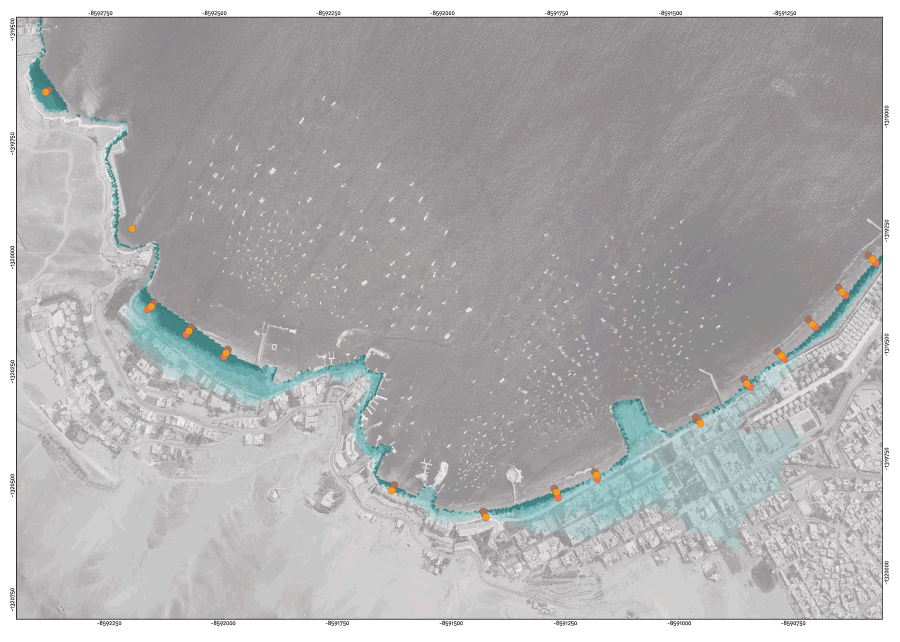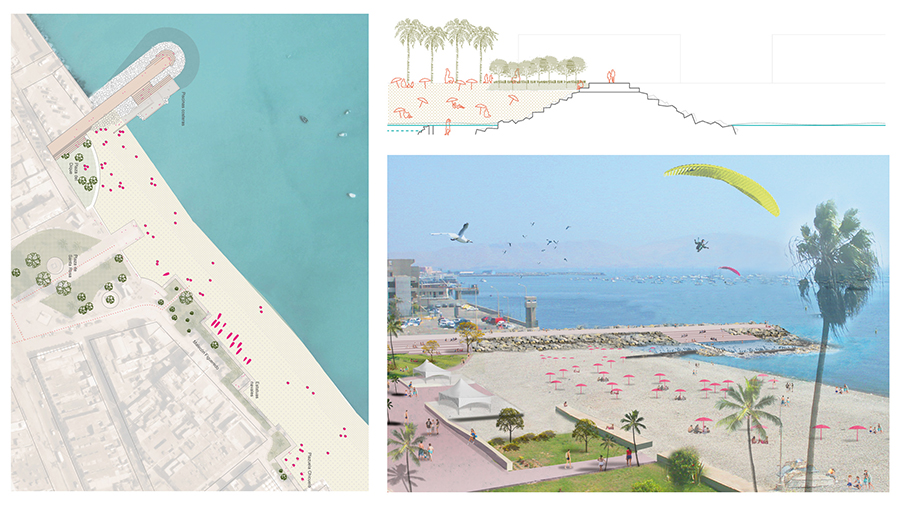Coastal Adaptation Plan for the Lima Metropolitan Area
Place: Lima
Country: Perú
Date: 2022 - 2023
Design: IHCantabria - LANDLAB - INCOSA
Promoter: Ministerio del Ambiente de Perú, Global Environment Facility, World Wildlife Fund, financiado por el Banco Interamericano de Desarrollo
LandLab team: Miriam García, David Camacho, Pere Marieges, Maria Sans
Nowadays, coastal areas are specially vulnerable areas to climate change effects, as they are part of the limit between land and sea, a highly dynamic zone. Within this context, the consortium between Instituto de Hidráulica Ambiental de Cantabria, LandLab and Incosa is created in order to ellaborate an adaptation plan to minimize these effects.
The metropolitan coast of Lima extends along approximately 100 km facing the Pacific Ocean. It is a changing coast, from alluvial plains and deltaic zones, to sedimentary or rocky coast. This great diversity of landscapes means a complex apporach to the site, characterized both by desert areas and by the emblematic Costa Verde, highly anthropized.
In order to decide adaptation mesaures, the coast is characterized in adaptation areas, considering which are the climate change effects on them and its affectation on human settlements. Thus, 16 adaptation areas are determined. For every area one or several adaptation strategies: seawards, backwards, consolidation, protection, non-structural or regulatory, to be discussed in local workshops with citizens, authorities and public technicians.


Mapas de inundación y erosión en las diferentes zonas de estudio









